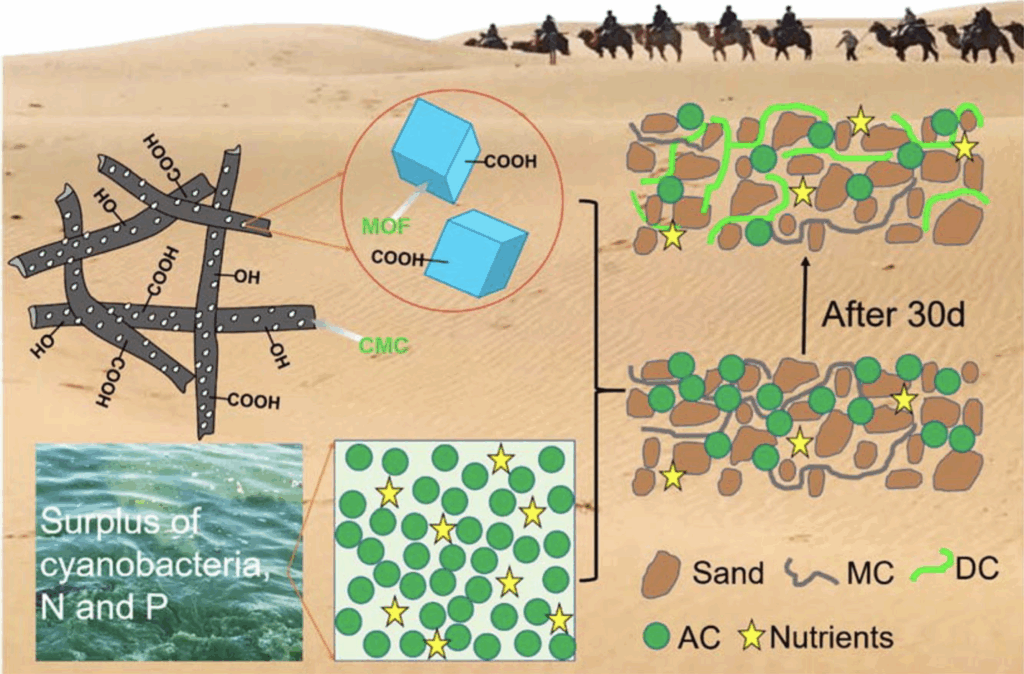http://en.people.cn/n3/2025/0628/c90000-20333827.html
https://doi.org/10.1016/j.scitotenv.2019.134824
For decades, the people of China’s arid northwestern region battled shifting sands with simple tools — pressing straw into the desert to form grids that trapped the windblown grit. Today, scientists are deploying cutting-edge biotechnology, mechanized equipment, and recycled materials to reclaim the land at an unprecedented pace.
Researchers at the Northwest Institute of Eco-Environment and Resources have cultivates drought-resistant cyanobacteria to accelerate crust formation from over 10 years to just two to three years, which boosts shrub survival rates by up to 15 percent and significantly cuts costs. The technique, already covering over 4,000 mu (about 267 hectares) of sandy land in Ningxia, is now a key weapon in China’s desert-control arsenal.
Another research team at the Dunhuang Gobi Desert Research Station under the Northwest Institute of Eco-Environment and Resources has pioneered a groundbreaking approach by repurposing fiberglass blades into highly effective sand barriers. Traditional sand control methods using straw or reed barriers, while effective to some degree, face limitations in China’s harsh desert environments. These organic materials can easily degrade when exposed to the region’s extreme climate conditions. Turbine blade solution overcomes the weakness through remarkable material properties. After extensive testing including UV aging, thermal cycling, erosion, and flexural strength assessments, the researchers found their engineered barriers demonstrate an excellent bending strength that is 14 times greater than wood composites, as well as exceptional resistance to thermal stress and UV degradation.
This technological breakthrough forms part of China’s comprehensive strategy against desertification.Retire

